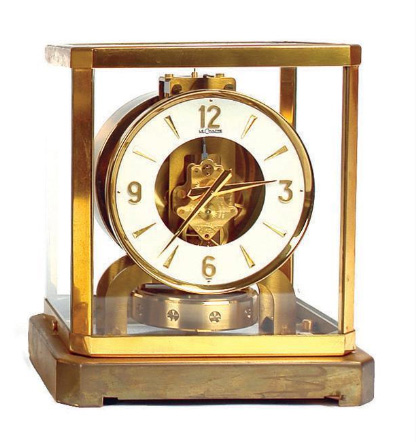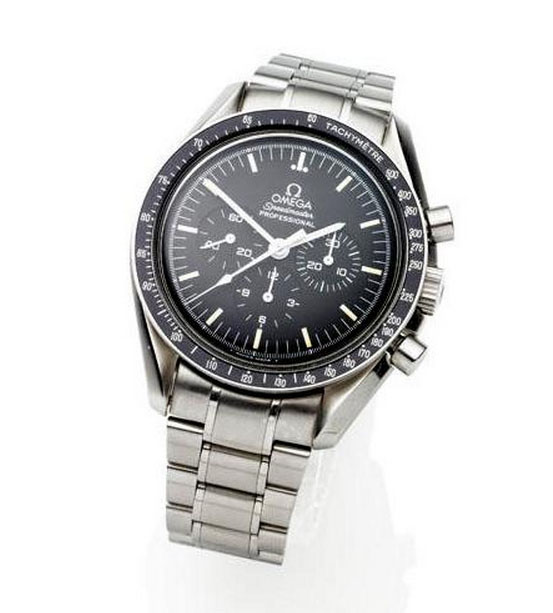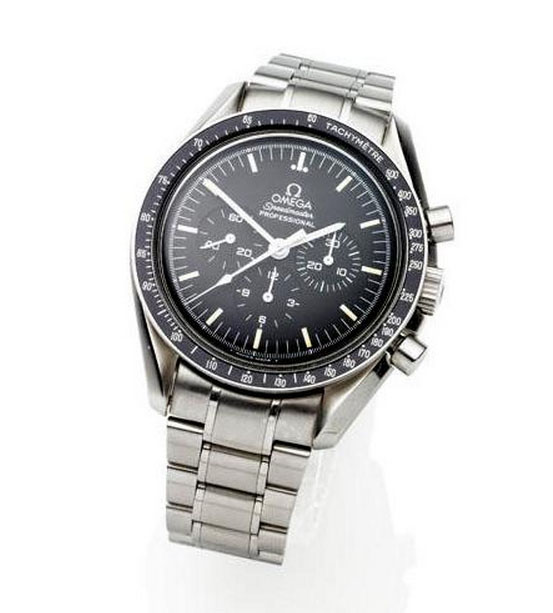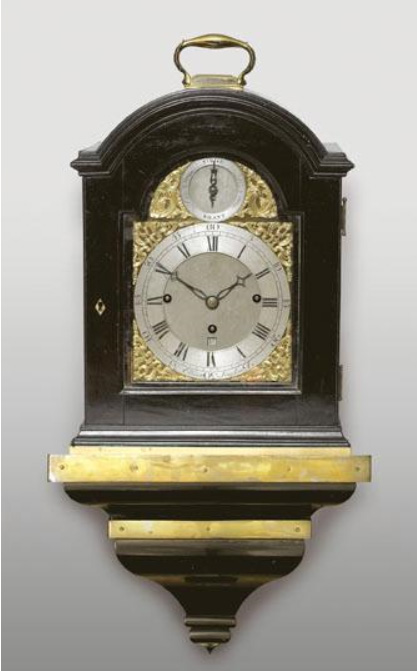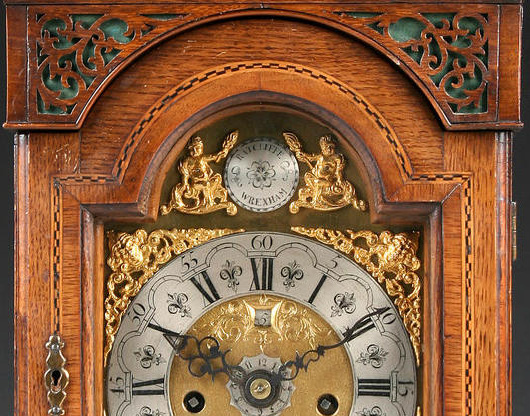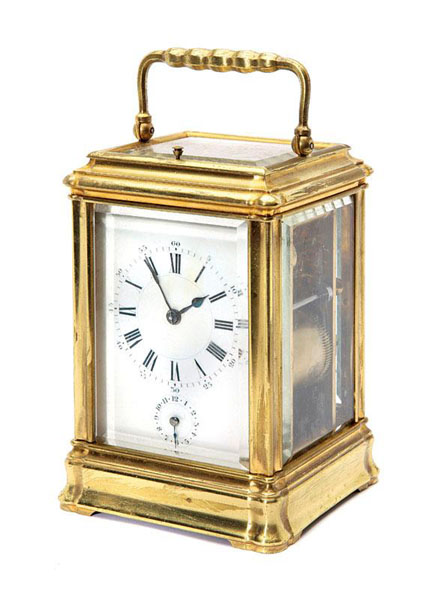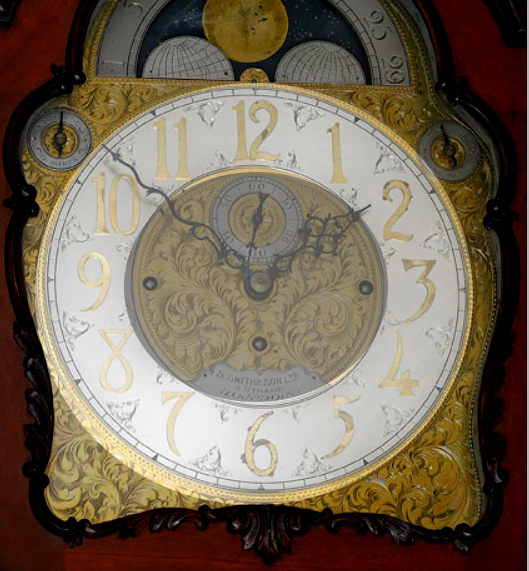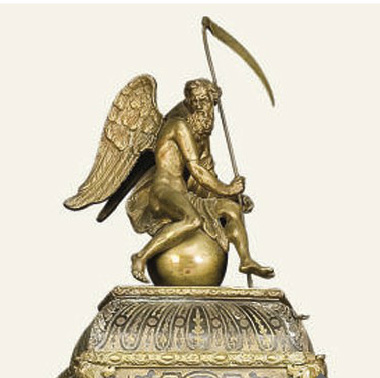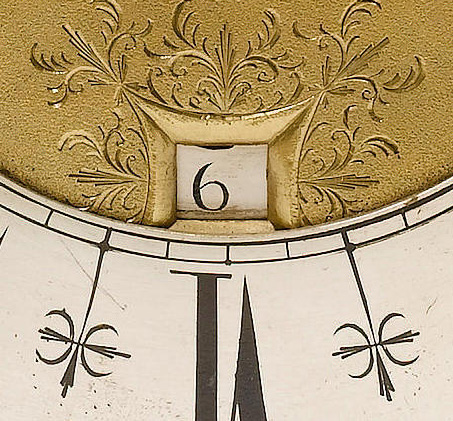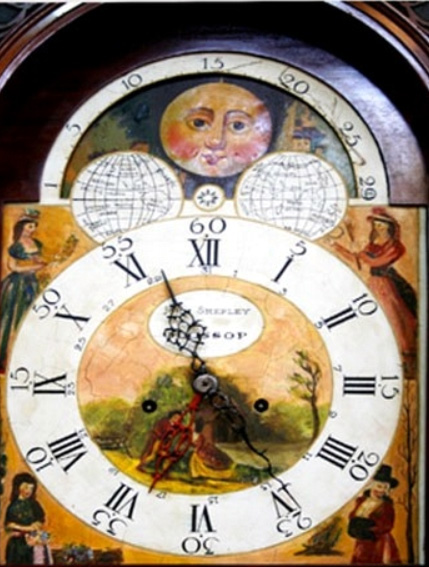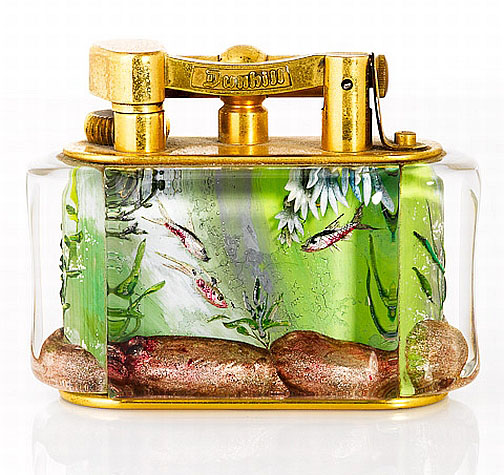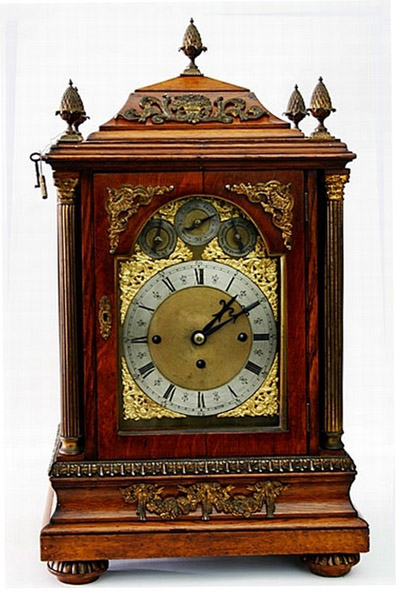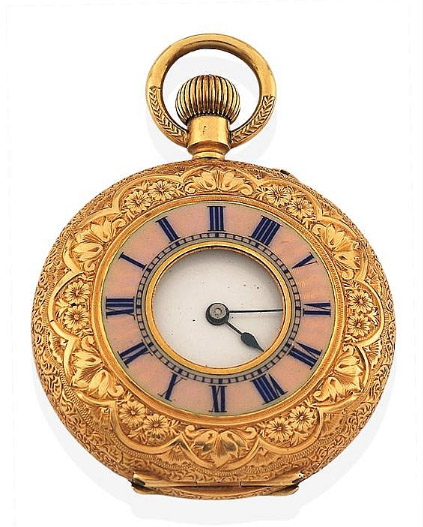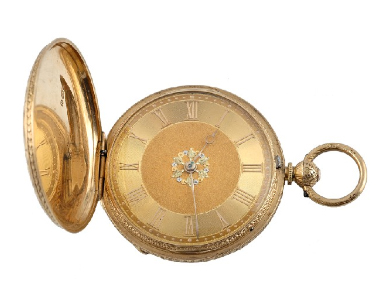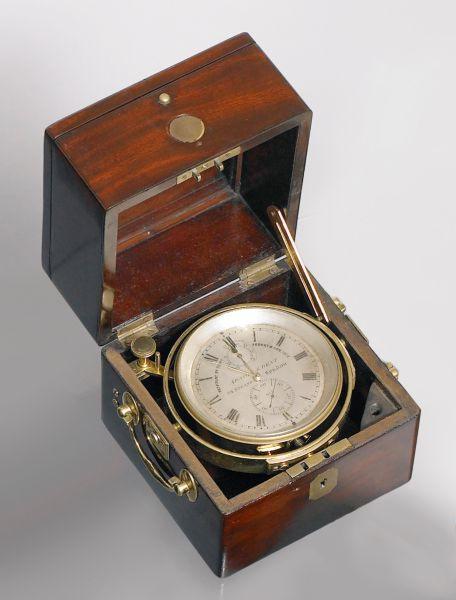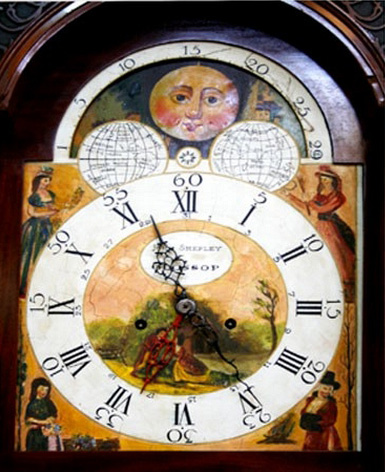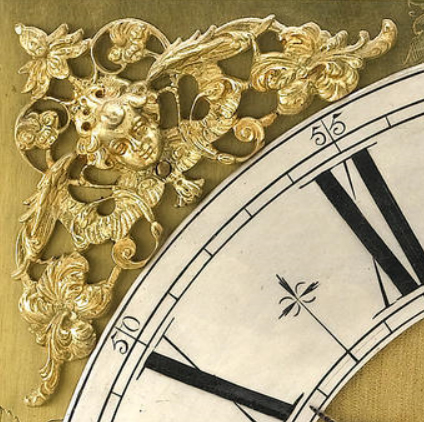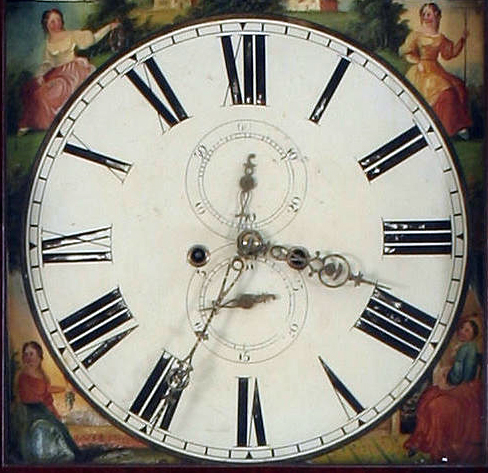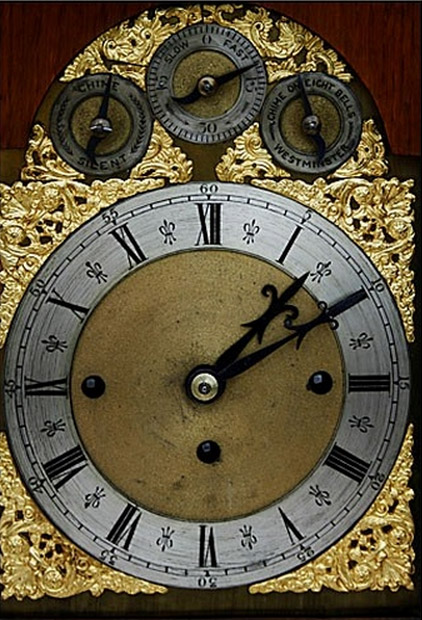Learn about antiques and collectables...
Click on a category below to show all the entries for that category.
Learn about and understand the items, manufacturers, designers and periods as well as the specialist terms used in describing antiques and collectables. Either click one of the letters below to list the items beginning with that letter, or click on a category on the left side of the screen to list the items under that category.
Atmos Clock
The Atmos clock is 'The Clock That Runs on Air'.
For centuries scientists had experimented with the idea of perpetual motion and watchmakers and clockmakers yearned for a timekeeping device that would work without the need of manual winding; in short a timepiece that would continue to run under its own power.
By the 1920's the closest they had come to this was the 400 day clock. In the late 1920s, Jean-Leon Reutter, a young Paris engineer produced a clock with a timekeeping mechanism designed specifically to consume the smallest possible amount of power to keep the clock running satisfactorily.
As well as changes to the mechanism, Reutter's clock included a mercury and gas filled bellows that would react to the most sensitive changes in temperature and atmospheric conditions, and in so doing, created a gentle rocking motion that gave power to the clock when needed.
The result of Reutter's achievement was an ingenious new clock that could run dependently and continuously, and so incredibly sensitive that it could be rewound by the slightest fluctuations in the atmosphere or by the slightest changes in temperature, hence the name 'Atmos Clock'.
In 1930, Jaeger-Le Coultre a world famous Swiss watch-making company, also famous for the 'Reverso Watch' acquired the Atmos Clock Patent from Reutter and has continued to improve the design and manufacture the clocks to the present day.
An Atmos clock takes a month to produce in the factory, then another five weeks of trial and adjustment before it is ready for shipment
Back Plate
On many types of clocks, the movement operates between two plates, usually made of brass, one at the back, and the other at the front, which forms a mount for the dial.
On English bracket, mantle and table clocks the backplate was often visible through a glass door or panel from the late 17th century, and could be profusely engraved with scrolling decorations, flowers, foliage, birds, and figures. The engraving could also include the maker’s name.
The amount of engraving reduced and became simpler as the 18th century progressed, and by 1800, had been reduced to a border, often with the maker's name in the centre. By the early 1800s all decoration had ceased, and only the maker's name was added, and by the Victorian era, most bracket, mantle and table clocks had no engraving.
Barrel (in a Clock)
In a clock or watch, the barrel is a cylindrical component that stores the energy from the mainspring. As the mainspring is wound, it stores energy in the barrel. As the clock or watch runs, the energy is gradually released from the barrel, turning the clock's gears and keeping the time.
The barrel is typically located near the centre of the movement (the mechanism that powers the clock) and is connected to the center wheel, which drives the rest of the gears. The barrel typically has teeth on its outer surface that mesh with the gears in the movement, allowing it to transmit energy to the rest of the clock. Some barrels are designed to be wound by hand, while others are automatically wound by the motion of the wearer's arm.
Baton Hands
A narrow hand on a watch, sometimes also called a stick hand.
Baton Numerals
A watch that instead of displaying numerals on the face, displays a marker in the form of a baton, or lower case letter "L". Since the baton-like marks are not numerals, the feature is also called baton markers, baton indexes and baton indicators.
Bleu Celeste
"Bleu céleste" is a French term that translates to "sky blue" in English, and it refers to a specific shade of blue pigment used in the decoration of porcelain. This color is a light, sky-blue shade that was often used in combination with other colors to create intricate designs on porcelain pieces. The use of "bleu céleste" was was first used by the Sèvres porcelain factory in the 18th century, and became popular in the 19th century. The colour is created by adding copper oxide to the glaze. It was valued for its ability to add a touch of lightness and delicacy to porcelain designs. The color was often used to create floral motifs, landscapes, and other decorative elements, and it was prized for its ability to evoke feelings of calmness and serenity.
Boss
A boss is small round or oval decorative device, used as ornament in Neo-classical style furniture, ceramics, sculpture and other decorative arts. They are usually applied to the surface in the form of stylized rosettes, but in the best pieces they are carved directly into the surface. Also known as paterae (or patera) or rosettes.
Bracket Clock
Bracket clocks were clocks that were supplied with an accompanying bracket matching the style of clock, that was fixed to the wall for the clock to stand on. Sometimes the bracket contained a compartment or drawer for key.
Many of these clock have probably been separated from their brackets, and nowadays it is a more general term applied to a clock designed for sitting on a mantle.
Brequet
Abraham Louis Breguet (1747-1823) was a French watch and clock-maker who brought new techniques, such as newly invented escapements, to a peak of perfection and was credited with the invention of the self-winding watch. He was famous throughout Europe, even providing watches to Turkey in the Eastern style, and even throughout the Napoleonic Wars continued to supply the English market. His English agents tried in vain to persuade him to settle in England, though Breguet made several visits. In 1802 Breguet received a gold medal at an exhibition of French industrial products for a 'new, constant-force, free escapement'. Breguet also made fine and complicated carriage clocks. He eschewed mass production methods and numbered his creations.
Brocot Escapement
The Brocot escapement was invented by the French clockmaker Achille Brocot in 1828. It is a type of escapement, which is a mechanism in a timepiece that controls the movement of the gears and regulates the timekeeping accuracy.
The Brocot escapement is a variation of the detent escapement and it is used in pendulum and spring-driven clocks. It uses a pair of pallets that engage and lock the escape wheel, allowing the clock's power to be transferred to the balance wheel. The escapement also allows the clock's gears to advance in small, precise increments, which helps to improve the clock's timekeeping accuracy. The Brocot escapement was widely used in 19th century for both domestic and public clocks, also it was widely used in marine chronometers.
The Brocot escapement is known for its high accuracy and stability
Broken Arch
An arch at the top of the clock, usually of half circle shape where the diameter is less than that of the frame from which it rises. The area in the broken arch may contain one or more subsidiary dials, the makers name, strike / silent mechanism, automata, phases of the moon or a painted scene. This design feature is found mainly on bracket clocks and longcase clocks.
Calendar Aperture
Carriage Clocks
Carriage clocks are one of the steps in the development of portable horology, the ability of a person to keep track of time when travelling.
In order to fulfil this function, the clock must keep accurate time, be portable and cased for protection, and allow easy access to the dial for the reading of the time.
Travelling clocks, known in French as "pendule de voyage", have been in use since the 15th century, and remained little changed until the early 19th century. French clock maker Abraham-Louis Breguet developed the first modern travelling clock, known as a "carriage clock" or "officer's clock" in 1796, which he sold to Napoleon several years later. His clock was highly complex. As well as showing the time it also showed the date and temperature.
The carriage clock is rectangular in shape with a carrying handle, and usually has a plain or gilt-brass case set with glass or more rarely enamel or porcelain panels. A feature of carriage clocks is the platform escapement, sometimes visible through a glazed aperture on the top of the case. Carriage clocks use a balance and balance spring for timekeeping and replaced the larger pendulum bracket clock. They were originally supplied with a padded leather carrying case, but many clocks have become separated from their leather case over the years.
From the 1820s, carriage clocks became more prevalent in both France and Britain, although most of the carriage clock manufacturing industry was based in France. Clock makers such as Paul Garnier and Alfred Drocourt in France designed distinctive models that were both aesthetically pleasing but also had advanced methods of time-keeping. Other renowned French makers from this period are Henry Marc, Henri Jacot and Leroy & Fils.
British clock makers, such as James McCabe, began producing carriage clocks in order to reduce the need for French imports to satisfy the market.
The golden age of classic carriage clocks was between 1860 and 1900. The industry was centred around Belfort in France, and production was then mainly exported to England. The factory of Armand Couaillet, in Saint-Nicolas d'Aliermont (France) made thousands of carriage clocks between 1880 and 1920. A French carriage clock became a standard wedding present from the 1880s to the 1920s.
The production of carriage clocks declined from the 1930s as the wristwatch, a much cheaper, personal and more easily transported method of timekeeping, was becoming popular
Prices for carriage clocks increase depending on the quality of the case, the maker and the degree of complexity of the movement. Additional features such as striking trains, calendar indicators, engraved gorge cases, porcelain or enamel panels, grande sonneries or subsidiary dials will add to the value. If the clock has retained its original travelling case, this can also make the piece more expensive.
As a general rule, English carriage clocks sell for higher prices than French pieces, due to the fact that they were produced in smaller numbers and were significantly larger than French carriage clocks.
Cartier
Cartier is a luxury goods manufacturer founded in 1847 by Louis-François Cartier in Paris, France. The company began as a jewelry workshop and soon gained a reputation for producing high-quality, innovative designs. In the late 1800s, Cartier began to expand its product line to include watches and other luxury goods.
In the 1920s and 1930s, Cartier became known for its Art Deco designs and its use of precious materials such as gold and diamonds. The company also began to produce a wide variety of luxury goods, including pens, lighters, and cigarette cases. In 1917, the company was sold to the jeweller Alfred Cartier, Louis-Francois' son, who further developed the brand.
During the 1950s and 1960s, Cartier continued to be a major player in the luxury goods market, and it began to develop its own line of perfumes and accessories.
In 1972, the company was acquired by a consortium led by Joseph Kanoui, who helped to expand the company's presence in Asia and the Middle East.
Today, Cartier is a subsidiary of the Richemont group and it continues to produce a wide range of luxury goods, including watches, jewelry, and leather goods. It is known for its high-quality craftsmanship, distinctive design, and iconic brand.
Chanel, Coco
Coco Chanel (1883 – 1971) opened a millinery shop in Paris in 1909 and went on to launch her own couture houses in Paris, Deauville and Biarritz. From humble origins, she became one of the greatest icons of fashion in the 20th century.
The creator of the little black dress and Chanel No. 5, Chanel pioneered a new style of women’s clothes, combining simplicity and comfort with elegance, to create an unmistakable style which had a great influence over the fashions of the 1920s and 30s.
Her innovations in costume jewellery were introduced through her Paris salon, where she opened a boutique specializing in accessories and jewellery.
Instead of copying the style of fine jewellery, her costume jewellery was designed specifically to reflect the elegant simplicity of her clothes and to compliment and ‘finish’ an outfit.
The simple but effective use of multiple strings of faux pearls with a black pullover epitomises this style. Other key pieces for Chanel include gold tone chains, pate-de-verre jewellery from Maison Gripoix and classic Maltese cross cuffs designed by Verdura.
Chanel closed her business when she was exiled to Switzerland during World War II, following her affair with a Nazi officer.
She re-invented the Chanel brand throughout the 1950s and into 1960s, working with designer Robert Goossens, producing long, rosary style necklaces, with chains of pearls and beads, and Maltese cross brooches decorated with glass cabochons in her signature colours of red and green.
In the mid 1950s the House of Chanel introduced leather handbags with metal and leather chains, which allowed carrying the handbag from the shoulder or in hand, and later, quilted-leather handbags.
After the death of Coco Chanel in 1971, control of the company passed to the Wertheimer family who had been shareholders and partners in the business since the late 1920s.
In the 1990s the company diversified into other luxury goods, including watches, sunglasses, all types of clutches and bags, and affordable jewellery.
As of the present time, Chanel S.A., known as the House of Chanel, is a French private company, that remains in the ownership of billionaires Gerard and Alain Wertheimer.
Chapter Ring
A separate metal plate on the face of a clock, on which the numerals for the hours and sometimes parts of the hours, are displayed, usually wheel shaped and sitting on top of the dial plate. The chapter ring is often a feature of the clock and can be silvered or enamelled to stand as a contrast to its background. The hours are usually shown in Roman numerals, although in the late 19th and earlt 20th century, Arabic numerals became fashionable.
Chronograph
A chronograph is a watch that also incorporates the features of a stopwatch, to measure elapsed time. Most chronographs are operated by two buttons, one to start and stop the chronograph second hand, and the other to return that hand to the starting position.
Chronos
Sometimes used as a decoration on clocks, chronos, also known as "Father Time", is the Greek god of time. He is usually depicted as an elderly bearded man, winged and wearing a robe or loin-cloth, and with a scythe or sickle, and hourglass. It has been said the Chronos was derived from the Greek god of agriculture, Cronus, and the Greeks confused their word for time, "chronos", with their god of agriculture who had a sickle as an attribute..
Crown Wind
A winding method for a watch, using a knurled or fluted knob, located at 3 o'clock on a wristwatch and 12 o'clock on a pocketwatch.
Date Aperture
A date aperture is a cut out section in the face of a watch or clock, displaying the day of the month.
Dial Plate
The dial plate is the front plate of a clock or watch, and may have the numerals painted or engraved on it, as well as cut-outs for the hands, date apertures, strike/silent adjustment or automata. On some clocks a chapter ring, displaying the numerals may sit on top of the dial plate.
Dunhill, Alfred Ltd.
Alfred Dunhill Ltd was founded in London in 1893 as a motoring accessories business.
In the 1900s, the company expanded into luxury tobacco goods. As cigarette smoking took off in the 1920s and ’30s, Dunhill became one of the most famous names in the field, opening shops in Paris, New York and Toronto and expanding into menswear, toiletries and other areas, but it is with smoking accessories that the firm is most notably associated.
Dunhill was particularly known for lighters, most famously the Unique lighter, launched in the early 1920s with the slogan ‘The lighter that changed public opinion’. Coming in various designs, the Unique could be operated with one hand; its design lessened the risk of petrol evaporation and it rarely needed filling. Dunhill also developed the first butane gas powered lighter.
Dunhill began manufacturing cigarettes in 1963. In 1967, Carreras Tobacco Company acquired a 51% interest in the company, and the company is currently owned by Compagnie Financière Richemont SA, a Swiss based luxury goods manufacturer whose brands include Baume & Mercier (watches) Cartier (jewellery and watches) IWC (watches), Montblanc (pens), Piaget (watches and jewellery)
Alfred Dunhill have retail emporiums for men in the major cities of London, Shanghai and Tokyo, and Hong Kong, referred to as the 'Homes of Alfred Dunhill'. As well being a retail outlet for Dunhill goods, these 'Homes' offer a range of services including a bespoke tailoring service, barber’s shop, fine wine cellars, bar or restaurant, screening room, and spa.
Dunhill's current product range includes men's luxury leather goods, writing implements, lighters, timepieces, fragrances and clothing.
Fusee
The fusee movement was used in clocks and pocket watches from the mid 17th century. The fusee is a cone shaped drum within the works that is linked to the barrel of the spring, usually by a length of chain.
As the mainspring loses its tension over time, the cone shaped barrel compensates for this by increasing the tension, by pulling the mainspring tighter, thus ensuring the time remains constant.
Use of the fusee in clocks was superseded by the "going barrel" in the mid 19th century and for pocket watches at the beginning of the 19th century.
The fusee continued to be used in marine chronometers until the 1970s.
Garnitures
A garniture usually consists of a set of matching but not identical ornaments, usually elaborately made of bronze, gilt bronze, spelter or brass. The ornaments are commonly covered or uncovered urns, candelabra, vases, tazze or statuary, that are more decorative than practical. If only two ornaments are present, the set may have originally been part of a clock garniture, from which the clock has been separated.
Gimbal
On a ship, a gimbal is a pivoted mounting for the compass, clock, chronometer, stoves, drink holders and other equipment which keeps the item horizontal, no matter which way the vessel is leaning.
Grande Sonnerie
A grande sonnerie is a striking system in a clock which strikes each quarter hour, striking one, two three or four times, followed by striking the hour on a different toned bell. The preceding hour may also be struck as each quarter hour.
Gravity Escapement
An escapement is a mechanical component that controls the movement of the clock's wheels and provides a regular ticking sound as the clock runs. In a gravity escapement, the pendulum's swinging motion is used to drive the escapement mechanism, which is responsible for the regular, ticking sound heard in a pendulum clock. The escapement mechanism consists of two pallets, or locking arms, which alternately lock and release the escape wheel, a toothed wheel that rotates in small increments with each tick of the clock.
As the pendulum swings, the escape wheel is rotated by the movement of the gear train, and the pallets lock and release it in a controlled manner. This creates the ticking sound and allows the escape wheel to turn at a consistent rate, which is necessary for accurate timekeeping. The pallets also regulate the pendulum's swing, ensuring that it remains consistent and prevents the clock from running too fast or too slow.
Gravity escapements are considered to be one of the most accurate forms of timekeeping.
Guard Chain
In the 19th century and early 20th century, a guard chain was attached to a watch, and also an item of clothing, such as a buttonhole or a waistcoat to prevent the loss of the watch. For ladies, the guard chains were used to hold the ladies fob watch securely and sometimes were long enough to be wrapped around the neck a number of times and worn as a necklace.
Half Hunter
A half-hunter (or "demi hunter") pocket watch is one in which the outer lid over the face of the watch has a cut out centre section, enabling the owner to view the hands to tell the time, without having to open the lid. On some half-hunter watches, the hours are marked on the outer lid.
Hood
In longcase clocks, the hood is the wooden case that surrounds the works and dial, and includes the glass front, which is usually hinged, so the door can be opened to wind the clock or adjust the time. In 18th and 19th century longcase clocks the hood usually slides forward for removal, allowing access to the works.
Hour Striking / Half Hour Striking
An hour striking clock chimes on the hour to indicate the time. The striking mechanism consists of a series of gears and hammers that are set in motion by the clock's movement and are designed to strike a bell or gong to mark the passing of time.
An hour striking clock will strike once on the first hour, twice on the second hour, and so on, up to twelve strikes at noon and midnight. In a half hour striking clock, the clock will strike once on the half hour, and the number of strikes on the hour corresponds to the number of hours passed since the previous half hour.
Hunter
A hunter pocket watch is the type where the case includes a spring-hinged circular metal lid or cover, that closes over the glass face of the watch, protecting it from dust, scratches and other damage or debris. The majority of antique and vintage hunter-case watches have the lid-hinges at the 9 o’clock position, suiting the right handed user.
Joachim Matthias Wendt
In many respects the history of Wendt's is a potted history of Australian gold and silver smithing. State directories of the late 1800s show that they sold watches, jewellery, rings, trophies, church plate, optical goods and electroplate. They also repaired watches and jewellery.
Joachim Matthias Wendt arrived in Port Adelaide in 1854, just 18 years after the foundation of South Australia. He was born in 1830 in Denmark. His mother died when he was nine years of age, leaving his father to look after him and two sisters. Joachim became a watchmaker's apprentice.
He brought these skills to South Australia, quickly opening a small watchmaking and jewellery shop in Pirie Street, Adelaide. Business was good and so he soon moved to better premises in Rundle Street.
Wendt's soon became recognised as a top quality shop. The jewellery, silverware, watches and clocks were equal to the best which were imported. In 1864 and 1865 Joachim received first prizes at a Scottish exhibition. In 1871, Wendt's was selected to make silverware caskets featuring Australian motifs for the Duke of Edinburgh, who was visiting Adelaide and other towns.
So pleased was the Duke of Edinburgh with Wendt's craftsmanship that he purchased additional items and appointed J. M. Wendt 'Jeweller to His Royal Highness in this Colony', By this time, twelve silversmiths, watchmakers, jewellers and shop assistants were being employed. What could not be made locally was imported.
Wendt's reputation for quality was further confirmed by the award of two first prizes for silverware at the 1878 Paris Exhibition. Success followed success, leading to a broadening of interests, including an involvement in the building of the Theatre Royal, the Adelaide Arcade and the Freemason's Hall.
J. M. Wendt had married a widow, Johiamic Koeppen, in 1872. Her son Herman entered her husband's jewellery business and added Wendt to his name, becoming Herman Koeppen (H. K. J Wendt. He and his brother, Jule, in 1903 were made partners of the business, Jule was sent abroad to be the overseas buyer.
Joachim Wendt died in 1917 aged 87. Nonetheless, the business continued to flourish under H. K. Wendt's management. His eldest son, Alan, joined the business in 1919, becoming a partner. On his father's death in 1938, Alan became sole proprietor. In 1947, Alan's son Peter Koeppen Wendt, joined his father and they became the first directors of the newly formed private company.
The final managing director of J. M. Wendt's was Timothy Wendt. Five generations of the family held executive positions in the business until its closure at the end of the 20th-century.
A highlight in Wendt's long and successful history was to be commissioned by the South Australian Government to manufacture a necklace and ear-rings for Queen Elizabeth II, and cuff links for the Duke of Edinburgh, for their visit in 1954. The jewellery had to incorporate opals, the most magnificent of which was the 203 carat 'Andamooka' white opal owned by the Government. Palladium was chosen as the metal and the large opal was flanked by 180 diamonds. The necklace and earrings are illustrated.
A trade journal described the gift as follows: 'The opal and diamond necklet and ear-rings suite is mounted in jewellery palladium with the large opal as the centre of the necklet. This is flanked by elegant side pieces, hand-carved in an attractive scroll design handset with diamonds. The chain at the back is of diamonds, each set in a diamond-shaped setting alternating with links pierced in the matching scroll designs and finished with a diamond set snap.'
As Wendt's centenary year official history closed 'In this way Wendt's first hundred years were fittingly symbolised'. Alas, Wendt's has now closed
From: Carter's "Collecting Australiana", William & Dorothy Hall, published by John Furphy Pty. Ltd. 2005
Keyless Watch
A keyless watch is a type of pocket watch or wristwatch that does not require a separate winding key to wind or set the time. Instead, a keyless watch is wound and set by a small knob or button located on the side of the watch, called a crown.
Keyless watches were first introduced in the late 19th century and quickly became popular due to their convenience and ease of use. Prior to the development of keyless watches, pocket watches were typically wound and set using a small key that was inserted into a hole in the watch case. The key would be turned to wind the watch's mainspring, and then turned again to set the time.
With the introduction of the keyless watch, watchmakers were able to simplify the winding and setting process by eliminating the need for a separate key. Instead, the crown on the side of the watch could be pulled out to set the time, and then pushed back in to wind the watch's mainspring.
The keyless watch design has since become the standard for most modern watches, both pocket and wristwatches. In addition to being more convenient to use, keyless watches are also typically more reliable and accurate than earlier models that used winding keys.
Lantern Clock
The lantern clock is so named because of the resemblance of the outlines of the clock to a lantern, emphasised by rectangular shaped case with pillars to each side, capped by the domed bell that sits on and covers most of the top of the clock, which is surmounted by a finial.
The lantern clock was developed in England after 1600 and similar versions were developed in other countries, during the 17th century.
They were the first type of clock to be made from brass, (earlier clocks were made from wood and iron) and the first to be widely used in private homes. They were weight driven, and designed to be wall mounted, although often having finials on the bottom of each of the four corners which give the impression of feet.
They were spring driven and only accurate to within about 15 minutes per day. With the invention of the pendulum in 1656, which increased accuracy, the works on many lantern clocks were converted by the addition of a pendulum.
Unmodified original lantern clocks are very rare. The original lantern clocks had only one hand, so a lantern clock with two hands is either a conversion, or a later copy, as are most lantern clocks available on the market.
Lever Escapement
A lever escapement is a type of escapement mechanism used in mechanical clocks and watches to regulate the timekeeping of the movement. It was invented by British clockmaker Thomas Mudge in the 18th century and is now widely used in modern mechanical timepieces.
The lever escapement consists of three main parts: the escape wheel, the pallet fork, and the lever. The escape wheel is a wheel with teeth that is driven by the clock or watch's main spring or weight. The pallet fork is a two-pronged component that is positioned so that it can engage with the teeth of the escape wheel, and the lever is a small, L-shaped component that is attached to the pallet fork.
When the escape wheel turns, one of its teeth pushes against one of the pallet fork's prongs, causing the fork to pivot. As the pallet fork pivots, it releases the tooth and engages with the next tooth on the opposite side of the escape wheel. At the same time, the lever, which is connected to the pallet fork, rocks back and forth, allowing the escape wheel to turn at a regulated rate.
The lever escapement is prized for its accuracy and reliability and is commonly used in high-end mechanical watches. It allows for precise timekeeping by ensuring that the movement of the watch or clock is regulated and consistent, and its compact size makes it an ideal choice for use in small, portable timepieces.
Maintaining Power
A horological term to describe a subsidiary driving force such as a spring or additional weight in a clock, which keeps the movement going while the mainspring is being rewound.
Marine Chronometer
A marine chronometer is a clock with a highly accurate time-keeping mechanism that can be used to determine longitude by means of celestial navigation..
They were essential navigational instruments for mariners and used in conjunction with the sextant they can determine an accurate calculation of the latitude and longitude of a vessel.
Prior to the invention of the chronometer in the 18th century, there was no reliable method for determining longitude, (although latitude could be calculated) with the result that ships could end up many miles east or west from their proposed destination, and even worse, run aground on land or reefs.
Credit for the invention of the chronometer is given to John Harrison, originally a Yorkshire carpenter, who spent most of his working life perfecting the invention.
Chronometers are usually mounted on gimbals and housed in a highly polished block-shaped wooden case often with protective brass edges, handles and a viewing lid. Emphasising the importance placed on safeguarding the chronometer, this was then second felt-lined wooden case.
The marine chronometer became redundant as a navigational aid in the early 1920s with the introduction if radio time signals.
Although no longer required for navigation, the quality of the workmanship in the chronometer has inspired collectors.
Prices for chronometers are determined by the name of the maker and the country of origin of the chronometer, whether the movement is of two or eight day duration, the quality of the casing, its provenance or history and, most importantly, by the condition of the movement and whether it has been altered or not, or includes any special features.
Sought after English makers include Thomas Mercer, Arnold & Dent, Parkinson and Frodsham, and Charles Shepherd.
Matted
For decorative purposes the centre exposed brass area of a dial clock was often matted. this practice, dating from the second half of the 17th century was produced by hammering the brass with a single or multi-pointed punch, by rolling the brass or by etching the brass with acid.
The process creates a fine granulated surface in which the light is refracted in different directions and so was more pleasing to the eye than the flat brass surface.
Moon Dial
If we imagine life in the 17th century, the only source of ascertaining the time of day or night would have been the local church or municipal clock striking every quarter hour, and able to be heard by all in the village. In England, when longcase clocks became popular and more affordable in the late 17th century, the function of timekeeping and source of time was moved to within the home.
An additional feature on some longcase clocks was to display the phases of the moon, that is the new moon, the full moon and the waning moon over the lunar 29 ½ day cycle. This information was important for farmers for working out cropping schedules; for travellers to know the amount of moonlight on a night they planned to travel; and for those who lived near the sea required knowledge of the tides.
Where included, the moon dial is usually in the form of a disc incorporated into the main dial plate, usually in the arched top section. The lunar cycle starts with the new moon displaying, which is a dark night sky and no man-in-the-moon face being displayed, and then progresses to the full moon face showing on the 15th day of the lunar cycle, and back to no face displaying as the moon wanes. Most lunar dials are partially concealed on each side of their opening in the main dial plate by semi-circular "humps" that allow the painted face to emerge slowly just as the real moon goes out of and back into the earth's shadow.
Nowadays, details of the lunar cycle is published in diaries, almanacs, and newspapers and although some modern longcase clocks are still manufactured with working moon dials, they are more for decoration than for use.
Movement
The technical name for the workings of a clock or watch, and does not include the dial or case.
Pair Cased
A pair cased watch is one with a double case. The movement is encased, and for additional protection this is fitted into an outer case.
Pendulum
The pendulum was discovered around 1602 by Galileo Galilei, and was adopted for time keeping by the Dutch mathematician and natural philosopher, Christiaan Huygens, who excelled in astronomy, physics, and horology.
The pendulum comprises a metal rod usually of brass or steel with a metal disk, known as a bob, at the end. The movement of the pendulum is driven by weights or a spring, and as a pendulum swings in a regular arc, it was found accuracy could be controlled to within a few seconds a week.
Timekeeping can be adjusted by changing the height of the bob on the rod, making the pendulum either swing slower or faster.
The disadvantage of the pendulum was that changes in temperature also changed the length of the pendulum, interfering with the accuracy of the clock, and so in the 18th century two types of mercurial pendulums were invented which countered the movement in the steel rod.
The pendulum was the world's most accurate timekeeping technology until the invention of the quartz clock, regulated by a quartz crystal, in 1927.
Petit, Jacob
Jacob Mordecai, who later became known as Jacob Petit, was born in Paris in 1796 and after studying art, was employed by the porcelain factory at Sèvres as a painter in 1822.
With his brother Mardochée he bought a porcelain factory in Fontainebleau in 1830, which he named using his own first name and his wife's last name of Petit, creating the name by which he became known. He later opened a workshop in Paris. By 1839 Jacob Petit employed about 200 craftsmen and was enjoying great success.
He manufactured decorative ornamental items such as statuettes, inkwells, vases, perfume bottles and clocks, and for decoration he favoured light colours such as pale pink, light green and mauve, together with black and gold for contrast.
Much of his output were copies of pieces by well known makers such as Sevres and Meissen. Many items were unmarked; those that were marked had the initials "JP" painted to the base in cobalt blue.
He died in Paris in 1868.
Rolex Oyster
One of the signature design features of Rolex watches is the screw-down crown and water tight cases. It was the development of the screw-down crown by Rolex in 1926, which gave them the final solution to the problem of leaky watch cases. The first ever water and dust resistant case was made by Rolex and named Oyster. As the Rolex Oyster was a sensational watchmaking achievement, the company publicised this feature in advertisements and the watch was worn by Mercedes Gteitz whilst breaking the record for swimming the English Channel.
Sconce
A light attached to a wall. Originally a candle holder that is attached to a wall with an ornamental bracket and sometimes with a reflective back plate, but now applied to an electric light that has been inspired by that design.
In recent times the word has also come into use to desribe the candle holders on a candelabra.
Spandrel
An architectural term that in horology refers to the triangular ornamental decoration in the corners of of the dial plate. The spandrels are usually of cast brass and may be additonally chased and engraved. On painted dial clocks the spandrels are also usually painted.
Subsidiary Dial
On a clock or watch, a subsidiary dial, also called an auxiliary dial, is a dial that is secondary to the main dial and may show seconds, day of the week or month, or strike silent. A subsidiary dial may be within our outside the main dial, and a clock or watch may have several subsidiary dials.
The Eagle
The eagle has been a symbol of power, victory, and strength for centuries. It is often associated with bravery, prowess, and dominance, and has been used as a symbol by many cultures and civilizations throughout history.
In ancient Greece, the eagle was associated with the god Zeus, who was considered the king of the gods and the ruler of the skies. In many cultures, the eagle was seen as a messenger between the physical world and the spirit world, and was associated with the sun and the sky.
In the Roman Empire, the eagle was the symbol of the Roman army, and was displayed on the standards of the soldiers to show the power and authority of the empire. In medieval Europe, the eagle was used as a symbol of power and victory by monarchs and rulers, and was often depicted in art and architecture as a symbol of strength and courage.
In modern times, the eagle continues to be a symbol of power, victory, and strength. It is often used as a symbol by nations and organisations, and is frequently depicted in art and on monuments to commemorate important events and achievements.
The eagle's powerful appearance, combined with its association with freedom, courage, and dominance, makes it a popular and enduring symbol of power and victory.
Thomas Sheraton
Thomas Sheraton (1751-1806) was born in Stockton on Tees in the north of England. He was apprenticed to a local cabinetmaker and after working as a cabinetmaker, Sheraton moved to London about 1790. Although he described himself as a cabinet-maker, like Chippendale, no definite piece of furniture can be traced to him as maker. Nevertheless, he was immensely influential and in 1791-4 published his four volume book 'The Cabinet-Maker and Upholsterer's Drawing Book'. The books were used as source of design by the furniture-making trade , who often simplified or modified the designs to suit their own preferences. Sheraton furniture is marked by restraint and sophistication, elegance and discretion, though he also found time to invent fanciful combination furniture.
Timepiece
In today's usage, the word "clock" is the name given to any instrument used for measuring time, but the word clock is derived from the Celtic word meaning "bell", and traditionally a clock without a bell or chime was known as a timepiece.
Vitascope Clocks
Vitascope clocks were made invented in the Isle of Man in 1941 by J. S Thatcher, improved by Joseph Summerskill between 1944 and 1944, and manufactured from the late 1940s by Vitascope Industries Limited, based in the Isle of Man.
The electrically powered clocks included automata that caused the ship to gently rock in the waves, and the backlighting changes to indicate the changing time of the day, and the sea is lit for both sunset and sunrise.
According to the Isle of Man company records, Vitascope Industries Limited was dissolved in 1968.
Watch Stands
At night Victorians usually hung their pocket watches on special stands. Because the face was raised and visible, this had the effect of converting the pocket watch into a clock. Watch holders were made of many materials, including wood, china, metal, and bone, and some were of such an elaborate design that the watch itself was almost lost.
The Staffordshire factories made a variety of holders in bright colours and odd shapes.
A development of these was the larger stand which had a recess for a small clock with a watch like face. They might be in the form of a castle gatehouse, with a recess above the gateway, or of a milkmaid with one arm bent to form the recess.
Watch stands were supersed in the 1920's by the increasing popularity of wristwatches.
